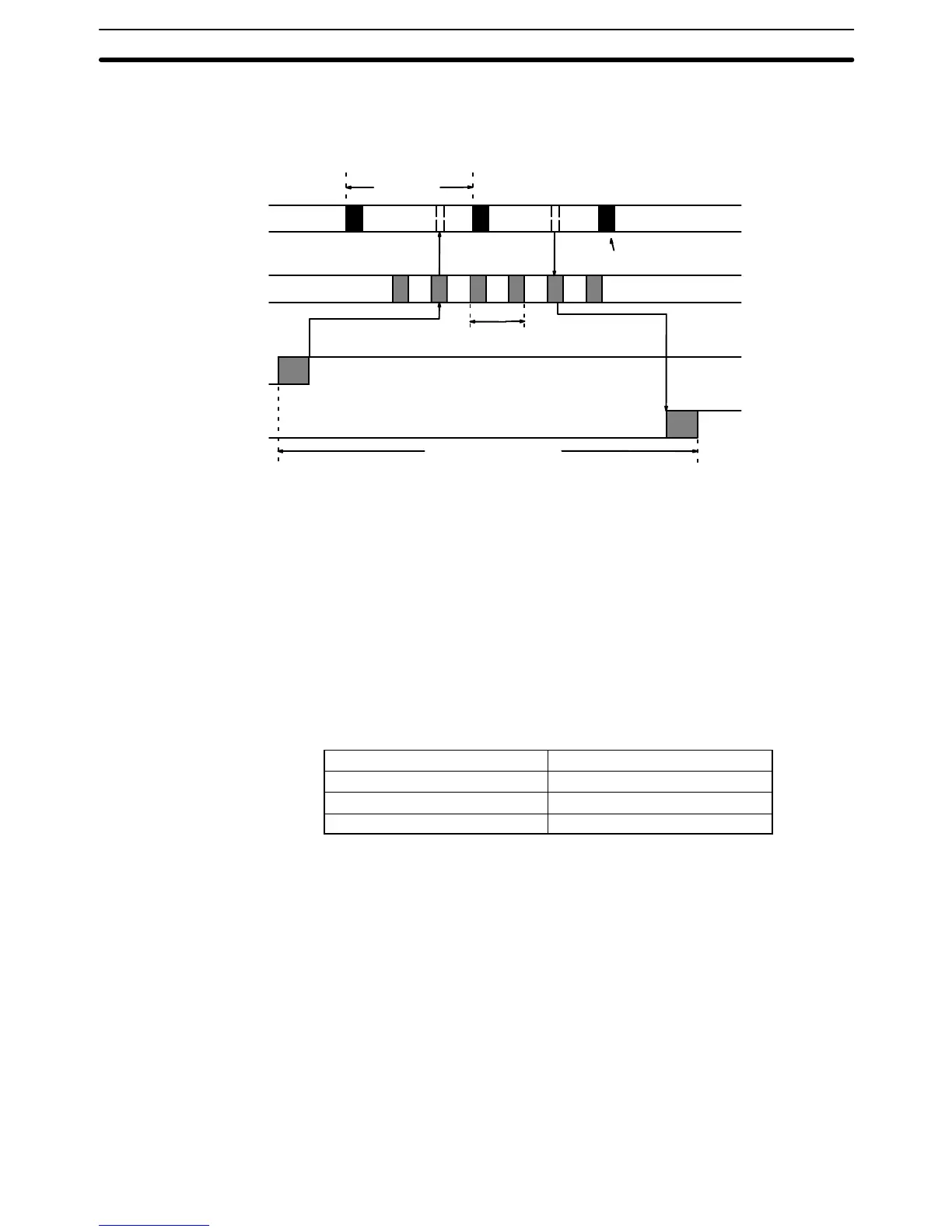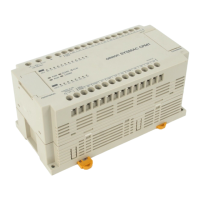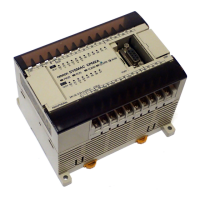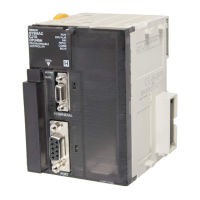492
The PC takes longest to respond when the relevant instruction is executed just
prior to SYSMAC BUS/2 refreshing. In this case the CPU does not execute the
instruction with the new input bit status until the next cycle. This situation is illus-
trated below.
Program
execution
Input signal
Output signal
Cycle
Cycle time
I/O refresh
I/O response time
Output ON delay
Input ON delay
Buffer in Master
Communications
cycle time
Program
execution
Maximum I/O response time = input ON delay
+ communications cycle time × 8 + cycle time + remote refresh time
+ 15 ms + output ON delay
Maximum I/O response time = 1.5 + (5×8) + 20 +2 + 15 + 15 = 93.5 ms
6-5-5 Synchronous Operation with a SYSMAC BUS/2 System
Here, we’ll compute the minimum and maximum I/O response times for a
CV1000 that is set for synchronous operation and controls a SYSMAC BUS/2
System. Both the input and output are on Units connected to Slave Racks. The
PC receives data from the Master once each cycle. The Master waits to transfer
to the PC after refreshing.
The data in the following table is used to produce the minimum and maximum
cycle times shown calculated below.
Input ON delay 1.5 ms
Cycle time 20 ms
Output ON delay 15 ms
Communications cycle time 5 ms (one group 3, 58M Slave)
Maximum I/O Response
Time
I/O Response Time Section 6-5

